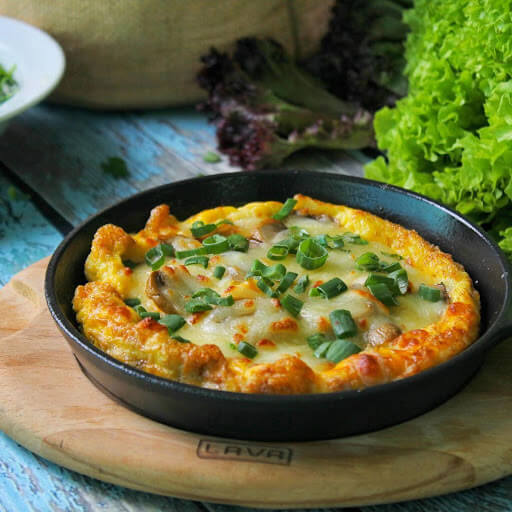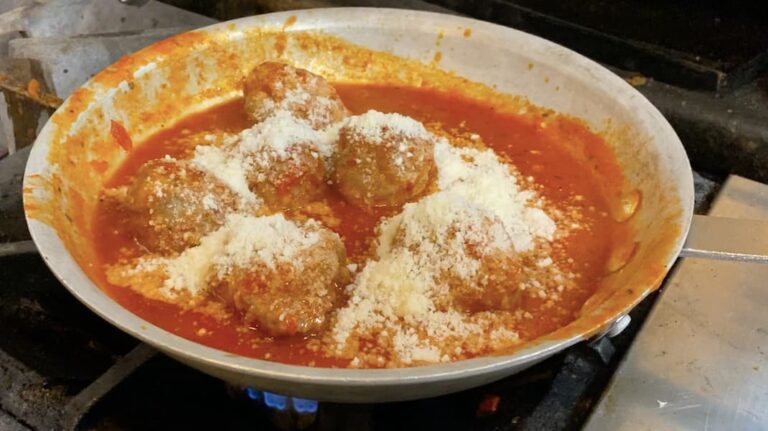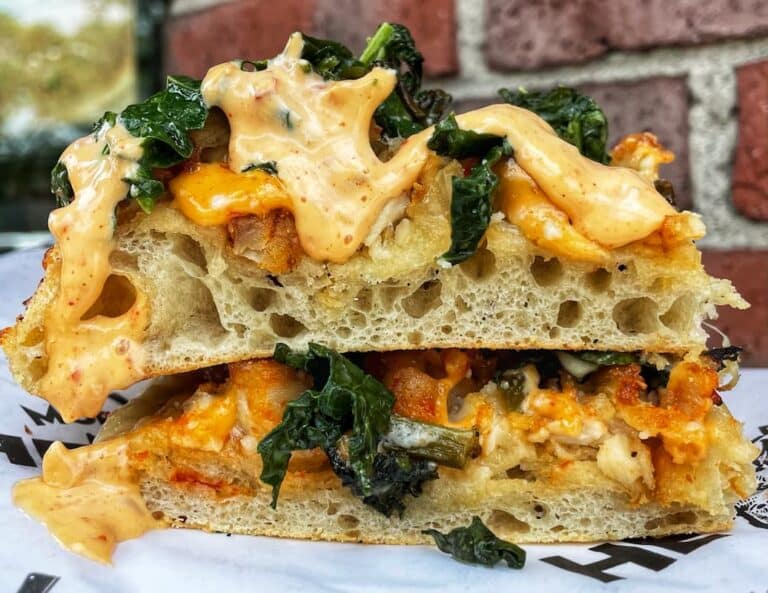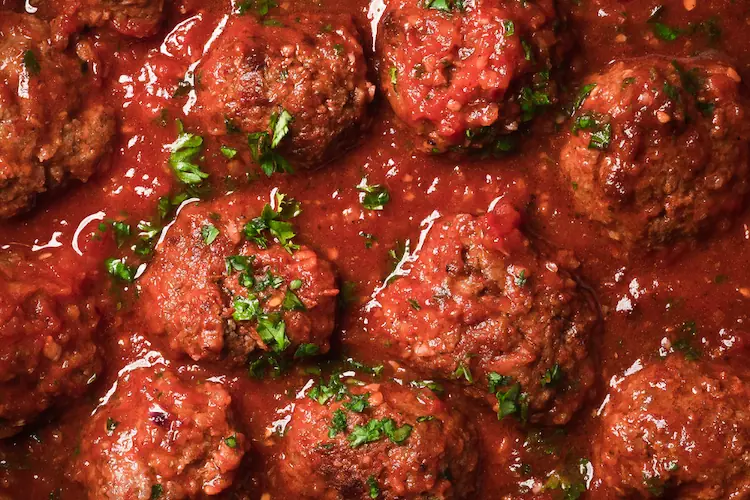I must admit it, I had never heard of an Italian Margarita until a couple of days ago. I was doing some topic research to find inspiration for upcoming posts, and apparently, lots of people are searching for this drink’s recipe.
At first, I was surprised. I mean, I come from a part of Italy where bars barely serve margaritas at all. The people here tend to like other drinks. Who would have thought that there is even a different type of margarita that everyone associates with us, without us knowing it?
Then, I read that this drink was made famous by Olive Garden. We don’t have it in Italy, so it’s not a surprise that we don’t know its staples. But now I was curious to know what this drink tasted like.
What Makes an Italian Margarita Different from a Classic Margarita?
A traditional margarita is made with tequila, triple sec, lime juice, and a salt-rimmed glass. Occasionally, it includes a Sweet & Sour mix. The Italian Margarita, on the other hand, replaces triple sec with about one shot of amaretto liqueur.
The Role of Amaretto in an Italian Margarita
Amaretto is a typical almond liqueur from Liguria. Originating 500 years ago in the town of Saronno, it’s now distributed worldwide. This almond-infused liqueur adds a rich, nutty sweetness that gives the Italian Margarita its unique flavor.
Other variations include limoncello, orange liqueur, or Grand Marnier, each adding a fun twist to the cocktail.

Let’s Mix It Up: Italian Margarita Recipes
After learning what makes an Italian Margarita stand out, it’s time to dive into the recipes. Whether you’re a fan of the classic amaretto twist, a refreshing limoncello variation, or the ever-popular Olive Garden-inspired version, there’s something here to suit every palate. Let’s shake up your cocktail game with these easy-to-follow recipes!
Basic Italian Margarita Recipe
Ingredients
- 1 ½ oz blanco tequila
- 1 oz amaretto, limoncello, or orange liqueur
- ⅓ oz lemon juice + ⅓ oz lime juice
- Ice
- Salt
- Lemon or orange slices (for garnish)
Instructions
- Rim the edge of your glass with a lemon wedge and dip it in salt.
- Add ice, tequila, limoncello, lemon juice, and lime juice to a cocktail shaker.
- Shake well, strain into the glass, and garnish with a slice of lemon or orange.
This simple version is perfect for a quick and delicious cocktail.

Long Italian Limoncello Margarita
This version is a fragrant and refreshing twist, perfect for summer evenings.
Ingredients
- 1 ½ oz blanco or reposado tequila
- 1 oz limoncello
- ⅓ oz lemon juice + ⅓ oz lime juice
- 4 oz soda water
- 2 drops Angostura bitters
- Ice
- Salt and lemon zest (for the rim)
- Lemon or orange slices (for garnish)
Instructions
- Mix salt and finely grated lemon zest for the rim, then coat the glass.
- Fill a shaker with ice and all the ingredients except the lemon/orange slices. Shake well.
- Strain into a glass and garnish with the slices.
This version offers a refreshing twist that highlights limoncello’s citrusy flavor.

The Olive Garden Italian Margarita
The Olive Garden-inspired Italian Margarita features fresh citrus and a touch of sweetness.
Ingredients
- 3 oz fresh orange juice
- 1 oz amaretto
- 1 ½ oz tequila
- 1 oz freshly squeezed lime juice
- Orange or lime slices (for garnish)
- Margarita salt with grated lime zest
Instructions
- Rim your glass with lime zest-infused salt.
- Shake all the liquids in a cocktail shaker with ice.
- Strain into the glass and garnish with citrus slices.

Tips for Making the Best Italian Margarita
Choose Quality Tequila
Opt for blanco tequila for its bright and crisp flavor, perfect for cocktails.
Experiment with Liqueurs
Try limoncello, Aperol, or Campari for unique variations.
Fresh Ingredients Are Key
Always use freshly squeezed lime and orange juices to elevate the cocktail’s flavors.

How long should you shake a cocktail?
Although it may seem like a minor detail, it is important to know how to shake a cocktail well.
If there is ice in the shaker and you shake it too long, you risk watering down your drink. If, on the other hand, there are eggs and you don’t shake them enough, you won’t get the desired consistency. Also, shaking the wrong way can be tiring.
Cocktails with citrus or those that simply need to be chilled should be shaken for about 10 to 15 seconds. This is to tone down the sharp acid of citrus and create air bubbles that will dampen the alcoholic burn of the drink.
But if there are eggs, dairy, or similar ingredients, the time goes up to at least 30 seconds. This is because in that case shaking is used to give them the right consistency. Think of when you whip cream in a mixer. It has to be shaken vigorously, and it certainly does not take only a few seconds to become stiff.
It is also important to hold the shaker horizontally. This way, you will need less effort to create air bubbles and beat eggs/dairy properly. If you are interested in learning more, I found a guide on the best cocktail-shaking techniques.

Which recipe was the most delicious?
To recap, now you know:
- what is the difference between an Italian margarita and regular margarita;
- what kind of vodka to use for both;
- how to shake a cocktail.
And you also have three recipes to try! Testing them was a lot of fun, and after evaluating them all, here’s what I think.
I feel the first recipe is best used with half the amounts of the ingredients to make shots or small drinks. It was good, but I expect more from a cocktail.
I have to say, at first I was sure that the second recipe would be the best. After all, it’s no secret that limoncello is my favorite Italian liqueur. But the addition of orange juice and lime in the Olive Garden Italian Margarita is also very intriguing.
Anyway, I did not really like the way the amaretto blended with the other flavors. I think it would be better used alone or for other drinks, like amaretto sour or French connection. So, in the recipe card below, I propose a hybrid of the two recipes that I hope you will like. Let me know what you think of it.
Italian Margarita FAQs
What is an Italian Margarita?
An Italian Margarita is a twist on the traditional margarita, featuring Italian liqueurs like amaretto or limoncello.
Can I use other Italian liqueurs?
Yes, you can use Aperol, Campari, or Grand Marnier to add different flavor profiles.
What food pairs well with an Italian Margarita?
This cocktail pairs perfectly with Italian appetizers, spicy dishes, or a cheese and charcuterie board.
Can I adjust the ratios in the recipe?
Absolutely! Adjust tequila, liqueur, or citrus juice based on your taste preference.
Cheers to the Perfect Italian Margarita
Crafting the perfect Italian Margarita is all about balance. The combination of tequila and Italian liqueurs creates a drink that’s both refreshing and full of character. Whether you prefer the nutty flavor of amaretto or the bright zest of limoncello, this cocktail is sure to elevate your next gathering.
Have you tried any of these recipes or created your own variation? Let me know in the comments! For more fun drink recipes, check out our tiramisu martini recipe.
Tips and Variations
Experimenting with different Italian liqueurs and adjusting the ratios of the ingredients are two ways to tailor your Italian Margarita to your taste and make it your own.
Italian Liqueurs: While Amaretto, with its sweet, slightly bitter almond flavor, is a common choice for Italian Margaritas, you can also explore other Italian liqueurs to add different flavor profiles to your cocktail. Limoncello, a bright, lemony liqueur, brings a fresh citrus twist that pairs beautifully with the lime juice. Alternatively, an orange liqueur like Aperol or Campari can introduce a complex, bittersweet note. If you prefer a creamier drink, you might even try adding a dash of an Italian cream liqueur like Baileys Almande, which is almond flavored, for a dessert-like cocktail.
Adjusting Ratios: The classic Italian Margarita recipe calls for equal parts of tequila, Amaretto or Limoncello, lime juice, and orange juice. However, feel free to play around with these proportions to suit your preferences. If you prefer a stronger tequila flavor, you might increase the amount of tequila. If you like your cocktails on the sweeter side, consider adding a bit more of the Italian liqueur or the orange juice. Conversely, if you enjoy tangier drinks, a bit more lime juice might be to your liking. Just remember, the key to a great cocktail is balance, so try to maintain a harmony between the sweet, sour, and strong components of your drink.
Remember, the beauty of cocktail-making lies in the freedom to experiment and adjust based on personal taste. Don’t be afraid to try different variations until you find your perfect Italian Margarita.
P.s: if you want to try other drinks, why don’t you go check my tiramisu martini recipes? 😉
Print
Our Italian Margarita Recipe
5 Stars 4 Stars 3 Stars 2 Stars 1 Star
No reviews
- Author: Mortadella Head
- Total Time: 5 minutes
- Yield: 1 1x
Ingredients
1 + 1/2 oz Jose Cuervo Especial Silver tequila:
1 oz limoncello
1 fresh lime juice
3 oz orange juice
Ice;
salt and lemon zest
a fresh lime wedge.
Tools used:
a Boston or cobbler shaker
a strainer
a Margarita glass (or anything with a long stem)
Instructions
- Mix the salt and lemon zest on a small plate.
- Rim the edge of the glass with a lemon wedge, then coat it with the salt mix.
- Take a cocktail shaker, fill it with ice, and add all the liquids.
- Shake for 12 to 15 seconds, holding the shaker horizontally.
- Strain into the Margarita glasses, and garnish with a lime wedge.
- Enjoy
- Prep Time: 5
- Category: Cocktails










